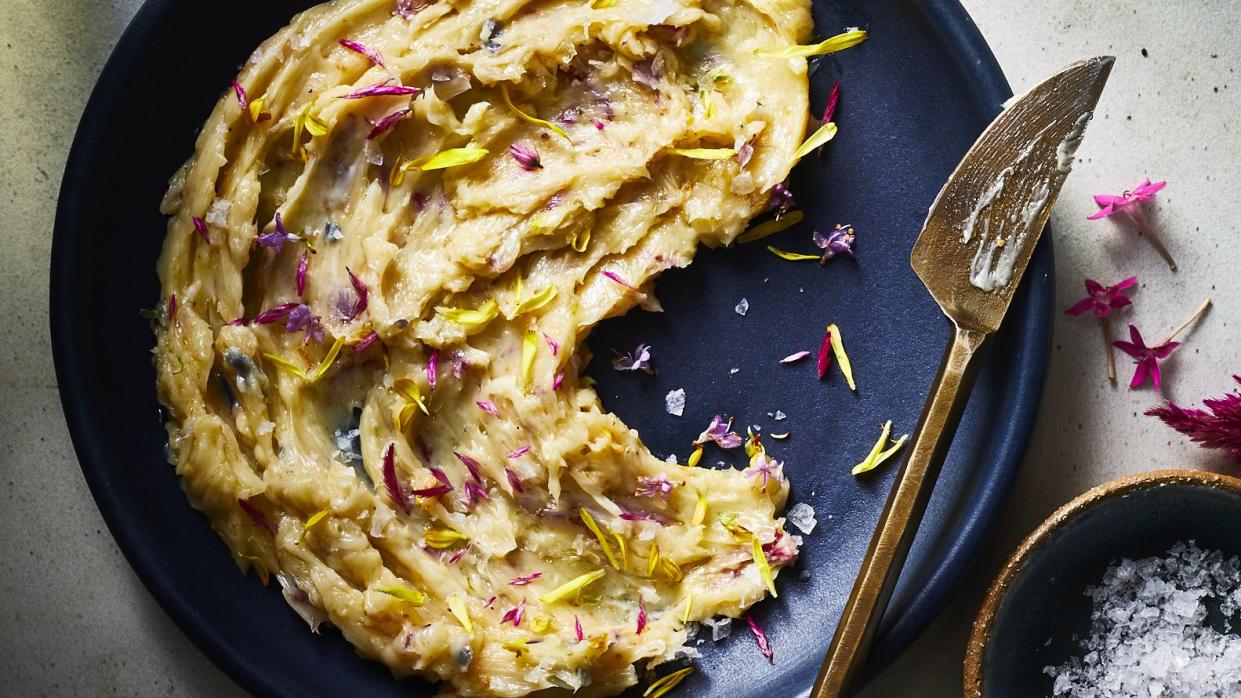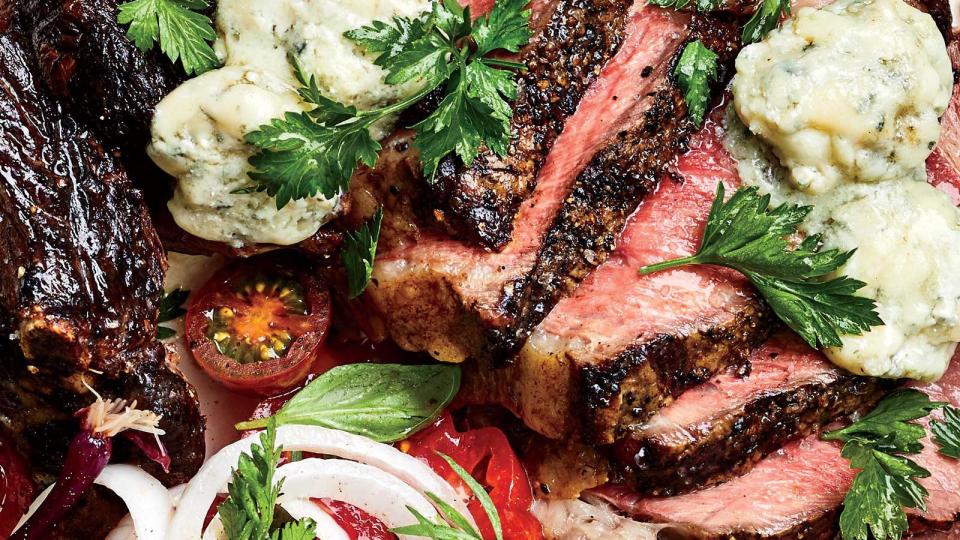How to Make Your Own Compound Butter

Caitlin Bensel
Butter is nothing short of glorious. It's rich, it's creamy, and it has practically endless uses in the kitchen. It's the base of the roux that makes your macaroni and cheese irresistibly creamy. It's responsible for the flaky layers in baked goods like biscuits and croissants. It even makes plain toast into something magical. And while we would never ask butter to change, we're certainly not opposed to augmenting it to make it even more tasty. That's where compound butter comes in. This ready-made flavor hero is a great thing to have on hand, whether you want to upgrade your weeknight pasta or add an extra-flavorful finish to hotcakes. We've broken down the basics about it here.
What Is Compound Butter?
Compound butter is butter bolstered with mix-ins. That can mean herbs, citrus zest, or even demi-glace. You'll often find medallions of it topping dishes like steak or fish, since it creates a delicious sauce as it melts, adding a luxurious finish. That sauce lends itself well to pasta, too, and dishes like baked potatoes, which you'd already typically top with butter. It can also be used in sweet applications, such as the Honeycomb Toffee Butter that tops these hotcakes.
How Do You Make Compound Butter?
You can use this recipe for Spaghetti with Cacio e Pepe Butter from our Culinary Director-at-Large, Justin Chapple, as a starting point. You'll need softened butter — unsalted, so you can control the amount of salt you're adding, both in the form of salt itself and other salty mix-ins like briny capers or miso paste. Then, add in your flavorings and mix well. In this case, Justin uses Pecorino Romano, freshly ground black pepper, and kosher salt as a nod to the classic Roman pasta dish.
What you do next might depend on the recipe you're making. But if you're just making compound butter independently, you can roll it in parchment paper and bung it in the fridge or freezer until it's firm and you're ready to use it.

Victor Protasio
Compound Butter Recipes
We've got plenty of different flavored butters you can play around with. If you're craving something cheesy, look no further than this Sweet Gorgonzola Butter (shown above), made with gorgonzola dolce, which chef Suzanne Tracht slices into 1/2-inch-thick rounds for topping her Double-Cut Rib Eye. (That Cacio e Pepe Butter wouldn't be a bad idea, either.) For something garlicky, check out the butter in this recipe for Garlic-Butter Rib Roast, which not only gets a punch of flavor from two (two!) heads of garlic, but anchovies, herbs, and shallot as well. It flavors the roast before it goes into the oven, and is also served atop the finished dish.
If you're feeling more of a briny vibe, go for this Green Olive Tapenade Butter — good with fish, steak, or pork — or Caper Butter, which is lovely when paired with roasted branzino. We also have two next-level compound butter recipes from food writer and recipe developer Yewande Komolafe — Ehuru and Wildflower Honey Butter, and Alligator Pepper and Makrut Lime Butter. She recommends serving them on bread or sandwich buns, or using them to finish meat, grilled fish, and roasted vegetables. "The only limit is your imagination," she writes. And indeed, with butter, you've already got a great blank canvas in the works. You might as well make the most of it.
How Long Does Compound Butter Last?
As former Food & Wine Senior Editor Margaret Eby writes, butter in general has a pretty long shelf life in the fridge, and even longer in the freezer. In the fridge, you can expect it to keep for about three or more months, while in the freezer, you can keep it for as long as a year-plus. (Of course, always keep an eye on the expiration date on your package.) If you're freezing it, make sure it's especially well-wrapped, and thaw it in the fridge when you're ready to use it.
But once you make compound butter, you have to keep in mind that the shelf life will vary based on the ingredients mixed into the butter. If you're working with something perishable like chive blossoms (which I tried in compound butter last year — 10/10 would recommend), keep it in the freezer so you can extend that magic. We recommend keeping compound butter in the freezer for up to three months.
Once you've decided on the type of compound butter you want to make, try making a big batch and freezing it in portions, so you can take out pieces as needed. Or better yet, keep multiple variations of compound butter in there — that way, you essentially have a buttery flavor library ready at your disposal. The next time you need to give your dinner a little extra oomph, just defrost some butter and you're good to go.

